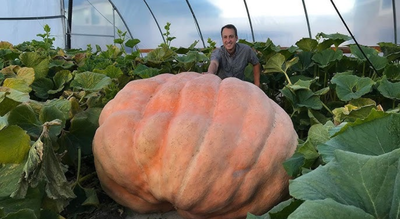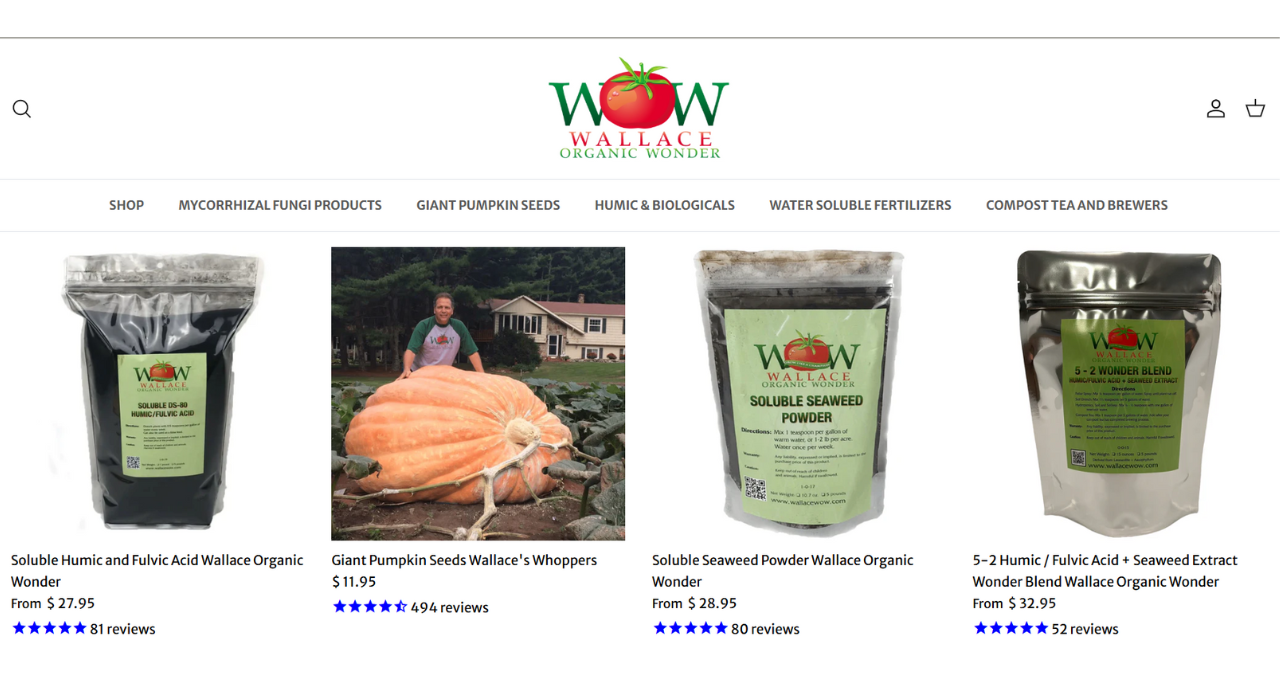ARTICLE AD BOX

Image: Screengrab Youtube/Jamie Johnson
There are all kinds of nerds in the world, and then there are giant pumpkin growers. What looks like a quirky fall hobby is, in truth, a serious and scientific pursuit that can take years of planning, seed preservation, soil mapping, and careful logistics.
It’s a community built on genetics, data, and pure obsession, and it’s even helping advance techniques in modern farming.For these growers, pumpkins aren’t just vegetables; they’re living projects of precision. From small-town weigh-offs to global championships, thousands of competitors around the world are locked in a friendly but fierce race to push past the next record.This year, twin brothers Ian and Stuart Paton from Hampshire, England, made history by growing the world’s heaviest pumpkin, a massive 2,819-pound orange globe affectionately nicknamed “Muggles”, in a playful nod to Harry Potter.
Their record-breaker not only smashed the previous world mark but also became the first UK-grown pumpkin ever to hold the global title.

The Paton brothers spent 131 days growing Muggles, which averaged 70 lbs (31.7 kg) of growth per day/ Image: X
The brothers, who have been competing since the 1970s, spent decades refining their soil blends and irrigation systems before finally achieving the dream they’d chased for 50 years. At over 21 feet around, “Muggles” was more than a pumpkin, it was Britain’s long-awaited entry into a world dominated by American growers.
How to grow a giant pumpkin
Ask any champion grower and they’ll tell you: these gourds don’t happen by accident.Ron Wallace, a two-time world champion and the first person to grow a pumpkin over a ton, says the secret is simple, but not easy. It starts with nutrient-rich, balanced soil and a proven seed with the right genetics, followed by months of constant monitoring.

In his Washington Terrace greenhouse, grower Matt McConkie—who set Utah’s pumpkin record in 2014 with a 1,817-pound giant/The Salt Lake Tribune
Giant pumpkins demand space, at least 1,000 square feet per plant, and can drink up to 150 gallons of water daily.
Growers use soil-heating cables to keep roots warm in cooler climates, drip irrigation systems for consistent moisture, and shade covers or small tents to protect the delicate skin from sun scorch. Some even use fans and misting systems to regulate temperature and humidity, and LED grow lights to extend daylight hours and boost photosynthesis, ensuring steady, around-the-clock growth.“The plants are like pets,” one grower said. “You don’t go on summer vacations.
You live in your patch.”Each vine is carefully pruned to direct energy into a single fruit. The soil is routinely tested for pH balance, calcium, and nitrogen, while compost, seaweed extract, and mycorrhizal fungi are added to boost microbial health. Daily watering and leaf inspection help prevent mildew and pests. At peak growth, a healthy pumpkin can gain 40 to 50 pounds a day, expanding so quickly that growers often rest the fruit on soft sand to prevent cracking.
The $1,000 seed: Why genetics matter
Behind every world-record pumpkin lies a prized seed—and sometimes, a hefty price tag.Top growers spend hundreds or even thousands of dollars on seeds traced back to proven champions. A seed from a 2,365-pound pumpkin once sold for over $1,000, later producing a record-breaking fruit nicknamed “Michael Jordan.”But genetics aren’t everything. Even the best seed can fail to germinate or grow poorly. Many beginners start with cheaper seeds, often gifted by veteran growers, and still manage to grow 1,000-pound pumpkins.

Wallace Organic Wonder offers everything for serious growers, from world-class pumpkin seeds and organic fertilizers to complete growing kits, manuals, and nutrient blends.
For those looking to start strong, Wallace Organic Wonder offers Wallace’s Private Stock, premium, hand-pollinated seeds from world-record pumpkins, complete with growing guides from two-time Guinness World Record holder Ron Wallace.
Tracing pumpkin family trees
To navigate this world of seeds and lineages, growers rely on Pumpkinfanatic.com, a database created by IT worker and pumpkin enthusiast Andy Corbin. His site functions like an ancestry tool for pumpkins, mapping the genetics of over 50,000 recorded gourds. Growers can search by weight, parentage, or grower name, helping them pick the perfect crossbreed for their next season. It’s the go-to reference for serious competitors and hobbyists alike, part science, part obsession.
Auctions, communities, and global rivalries
The pumpkin world has its own economy and camaraderie. Each winter, sites like BigPumpkins.com host dozens of online auctions where rare seeds are sold to benefit local grower clubs. Some auctions attract hundreds of bidders, all vying for the chance to grow the next record-breaker. Beyond competition, there’s a shared culture of generosity. Many top growers donate seeds to newcomers or swap genetics with rivals they’ve beaten by only a few pounds. As one grower put it, “You might lose by six pounds one year, and the winner will hand you the seed that beats him next time.”
The heaviest pumpkins in history
| 2025 | Ian & Stuart Paton | UK | 2,819 lbs | First UK-grown world record |
| 2023 | Travis Gienger | USA | 2,749 lbs | “Michael Jordan” pumpkin |
| 2012 | Ron Wallace | USA | 2,009 lbs | First over one ton |
| 2006 | Ron Wallace | USA | 1,502 lbs | Broke the 1,500 lb barrier |
Records have been broken 21 times since 1993, and experts say the next milestone, a 3,000-pound pumpkin, may not be far off.
Seeds and resources for beginners
Interested in growing your own? Here’s where to start:
Start small, track your progress, and don’t worry if your first pumpkin isn’t a record-breaker. The fun, say growers, is in watching it grow, and in being part of the strange, passionate community that keeps pushing the limits of what a pumpkin can be.

 1 hour ago
3
1 hour ago
3








 English (US) ·
English (US) ·